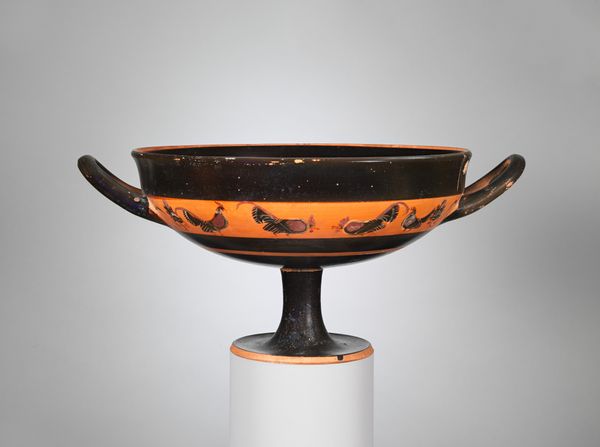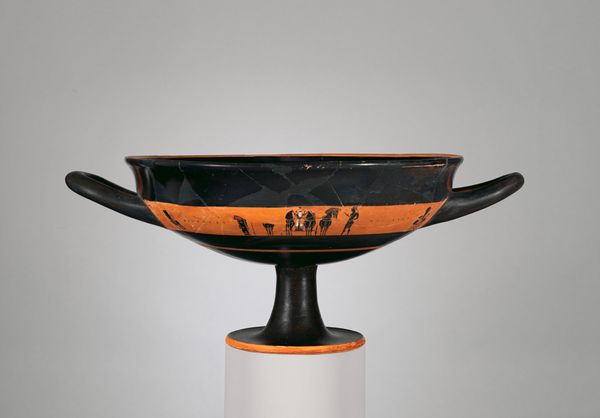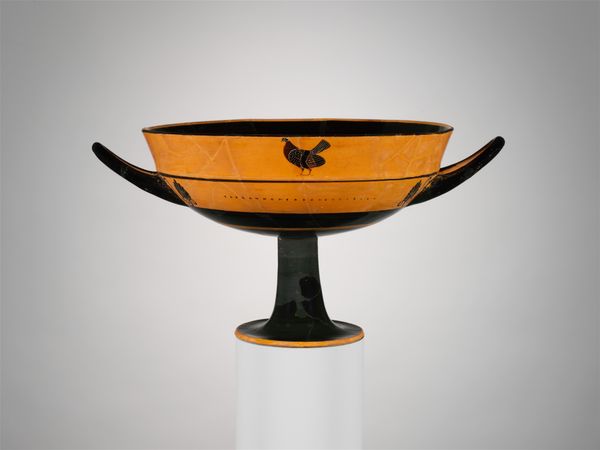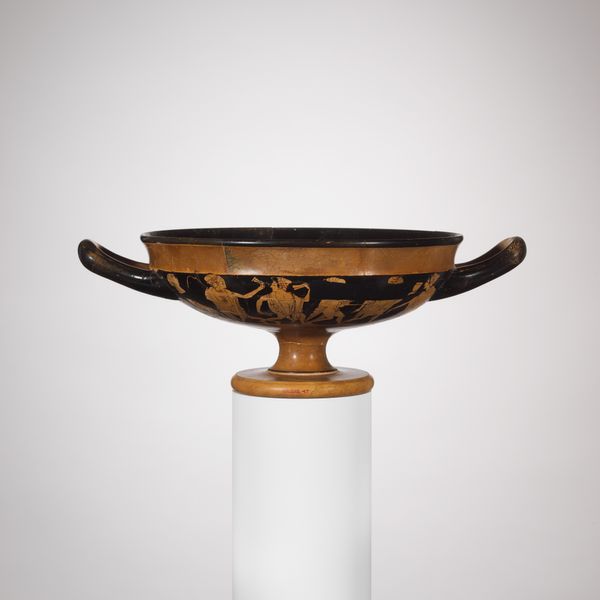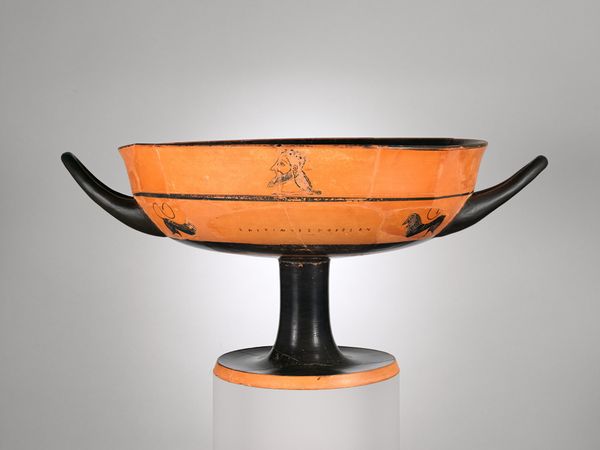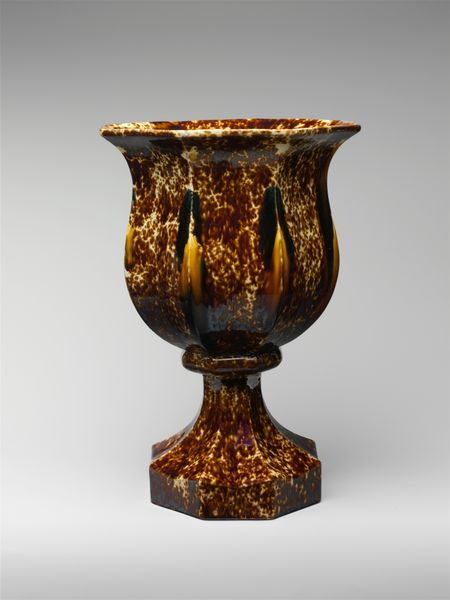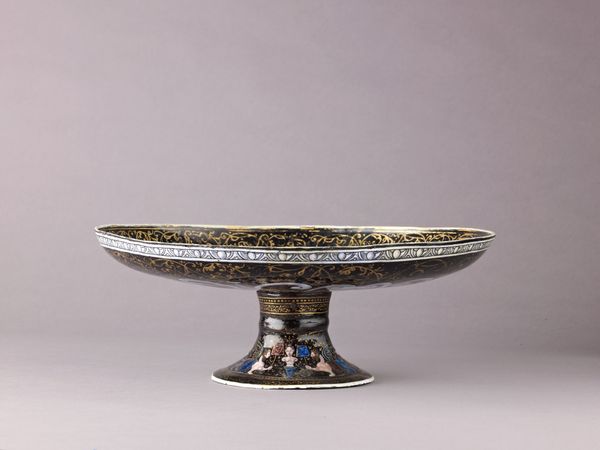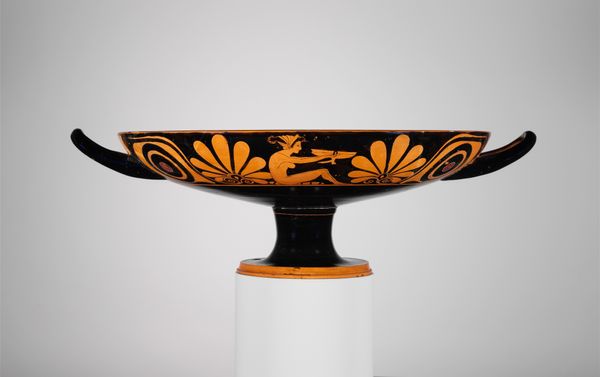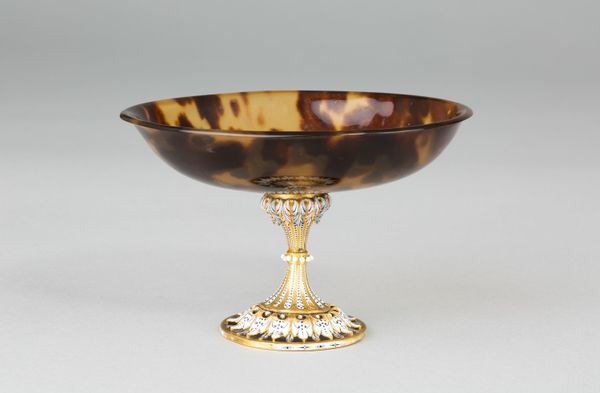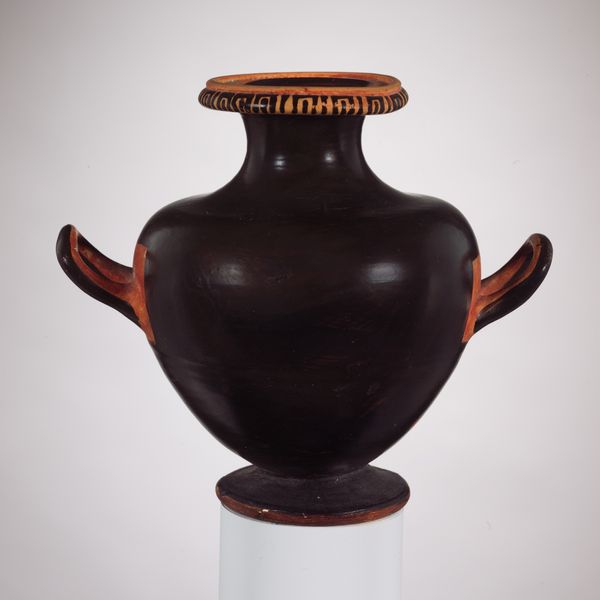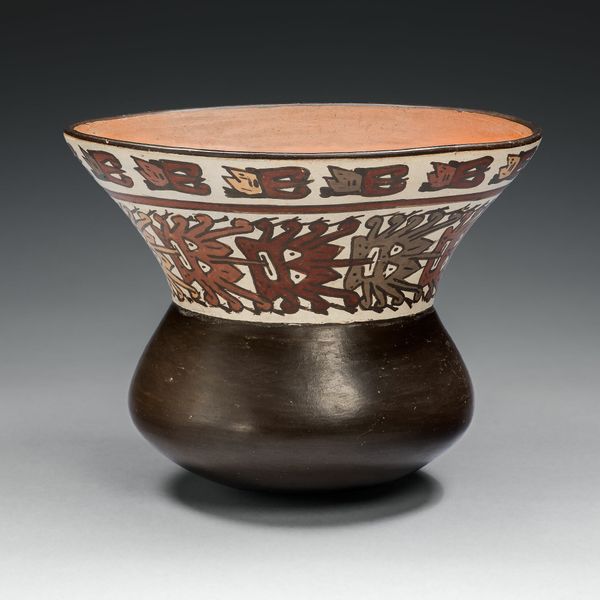
ceramic
#
greek-and-roman-art
#
ceramic
#
figuration
#
ancient-mediterranean
#
ceramic
Dimensions: H. 3 3/4 in. (9.6 cm) width with handles 9 15/16 in. (25.2 cm) diameter of bowl 7 1/4 in. (18.5 cm)
Copyright: Public Domain
Editor: This is a terracotta kylix, or drinking cup, created around 540 BC. It’s currently held at the Metropolitan Museum of Art. The stark contrast between the black glaze and the reddish clay body immediately grabs my attention. How do you read the relationship between the figures and the void? Curator: Note the distribution of weight. The eye is drawn upwards by the geometric stem of the cup and held by the imposing black of the drinking vessel. But look closer—the terracotta provides a secondary rhythm through a sequence of interspersed characters, some obscured by shadow, yet contributing to the object's global meaning. Does that linearity disrupt your earlier interpretation? Editor: I hadn't thought about the verticality you describe and the imposition of a flat blackness! Before, I saw it as figures dancing around the cup, like a frieze. I still feel like it guides the eye horizontally. Curator: Horizontal motion exists. Semiotically, that horizontal line reads like an assertion of the vessel's purpose as a tool—not merely decoration. It's functional elegance. Editor: So, the composition isn't just aesthetic, but also communicates function? It's beautiful but practical. Curator: Indeed. The ceramic surface presents an opposition between two ideas: 'utility' and 'ornament.' The structure reveals purpose, ascribing this artifact the double value of artwork, and 'tool.' Note too, the tension and interplay between void and substance: negative space performs an important role by offering balance to those dense narrative areas. Editor: I never thought of negative space applying to three-dimensional art like this before. Now I see that the black band emphasizes that! Curator: Exactly. Our final evaluation should come to see how even everyday items embody sophisticated tensions. The artist's conscious balance demonstrates just how crucial even a routine form embodies intellectual design decisions. Editor: I see so much more complexity in it now! It’s more than just a cup, it's a statement. Curator: Precisely. Now you're thinking like a true formalist.
Comments
No comments
Be the first to comment and join the conversation on the ultimate creative platform.
